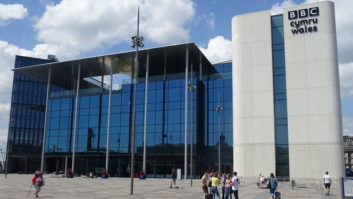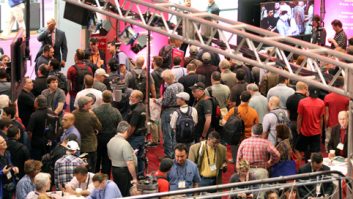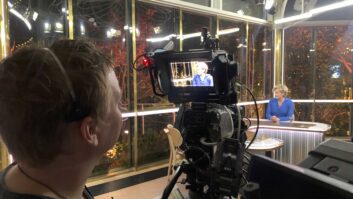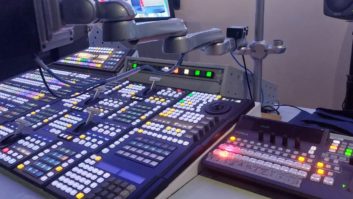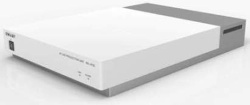
In an effort to make IP technology mainstream for video, particularly for live production, Sony has launched the NXL-IP55, a video network unit that can transfer multiple HD-SDI image signals, audio signals and control signals over a single network cable, writes David Fox. These units could be used when shooting in a theatre or stadium, transmitting images simultaneously from multiple cameras with minimal delay time. The NXL-IP55 is claimed to keep latency to within a single field while sending data streams from multiple cameras over the network. For live multi-camera HD production it could replace coaxial cables carrying HD-SDI signals, as well as numerous other cables typically needed to carry sync and control signals. As a single standard network connection is all that is required to interconnect multiple cameras, it should result in simpler setup configurations and greater operational efficiency. The NXL-IP55 supports bi-directional IP image transfer, so any output switches made in an OB truck could propagate back to the stage- or pitch-side NXL-IP55 with little delay, for large-screen display on site. The NXL-IP55 also works with the IP transmission features built into Sony’s newly announced HDC-2000 broadcast camera. An HDC-2000 setup consists of a camera head and a camera control unit connected by a Gigabit network transmission line. By connecting an NXL-IP55 unit to each line, it becomes possible to transmit image signals from up to three cameras plus one return (or two cameras plus two returns). It enables transmission of up to four HD images over a single composite fibre-optic cable, running between the separate cameras and CCUs. Sony suggests that these capabilities could significantly enhance dynamic scene shooting when transmitting from sports and stage events. HDC-2000 + HDC-2550 The HDC-2000 was joined at NAB by another new live production camera, the HDC-2550. Both use a newly developed 2/3-inch CCD image sensor and digital signal processing with a 16-bit analogue-to-digital converter. The HDC-2000 is the studio version of Sony’s existing portable HDC-2500, which is designed for studio and sports applications and offers a variety of signal output formats, including 1080/50p and 59.94p and RGB 4:4:4 output. Like the HDC-2500, it uses 3Gbps, high-bitrate fibre transmission to deliver higher frame rates without compression and support 3D operations as two single camera signals can be transmitted in parallel through a single fibre. It also allows 2x slow motion picture production when used with the SR-R1000 SRMaster storage unit. This means the HDC-2000 will allow sports productions to shoot some slow motion from all angles in the field, although it is not purely a slow motion camera. The 3Gbps fibre can also enable dedicated IP network communication between the HDC-2000 and its control panel, the HDCU-2000, which should offer further advantages for live camera operations. Fibre or triax The portable HDC-2550 includes a standard triax cable interface, for simple integration with existing studio or outside broadcast infrastructures. However, it also has a new changeable transmission side cover allowing users to easily switch between fibre and triax connections. The side panel also allows for the installation of third party wireless transmission systems. The camera body has a carbon fibre outside cover, which makes it firmer and stronger without adding weight. The HDC-2550 is fully compatible Sony’s HDC-1500R Series cameras, giving it access to their wide choice of peripherals such as viewfinders, remote control panels and large lens adapters. Other features include: a dual optical filter wheel; and variable frame rates: 1080/50i or 59.94i and 720/50p or 59.94p as standard, with progressive frame rates 1080/23.98PsF, 24PsF, 25PsF and 29.94PsF as an option. “Both the HDC-2000 and HDC-2550 build on Sony’s legacy in live production and help us to push the boundaries of what is possible in live sport production. Through technological innovation, both cameras have been built so they are as operationally efficient as possible, with the real customer and operator in mind,” said Claus Pfeifer, Strategic Marketing Manager, Sony Europe. The HDC-2000 and HDC-2550 will begin shipping in May. www.pro.sony.eu
